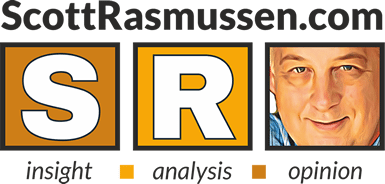
There is a vigorous debate as to whether phone polling is dead or just dying. Some of it is fueled by the erroneous notion that the pollsters total missed the mark in the 2016 election. Actually, the national poll results were generally accurate in forecasting a modest popular vote victory for Hillary Clinton. While the polling was decent, the analysis wasn’t.
Still, there are legitimate questions about the viability of phone polling in a time when fewer than half the nation’s households have a landline telephone. And, calling cell phones isn’t necessarily the answer. Hardly anybody answers their cell phones unless they know the caller. Hard as it is for older Americans to accept, phones just aren’t for talking anymore.
The challenges for the industry go beyond just phone technology and etiquette. When I did my first live-operator poll more than 30 years ago, Americans shared a much more unified culture. Not only did we use the phone as our primary means of communication, our news and entertainment came from only a handful of sources that we all knew.
In the 1970s, 94% of Americans watched one of three television networks at night. As if that wasn’t enough, when the president spoke, we all watched because the networks ditched their regular coverage in favor of the White House messaging. Different people placed different levels of trust in the media or the president, of course, but we were all getting the same narrative as a starting point. That world no longer exists.
Today, it is certainly possible though difficult, to conduct a quality phone poll. Many firms continue to do it well. However, it will not be possible much longer. Reasonable people can disagree as to how much longer phone polling can hang on, but the future of polling will be built on digital platforms. That’s why I’ve chosen a digital approach for all ScottRasmussen.com polls (see Methodology).
It takes more than a digital platform, though, to generate reliable data. It takes a team of top-quality professionals to use the platform appropriately and with rigorous standards. That’s why I’ve chosen HarrisX, a leading research company specializing in online surveys, to be my partner at ScottRasmussen.com. They will survey one thousand registered voters for us five nights a week. Each night’s survey collects responses from diverse panel of Americans and is designed to reflect a nationally-representative sample weighted for gender, region, race/ethnicity, income, political party, education, and other relevant demographics.
Reliable data is the foundation of public opinion research. But, as we saw in 2016, good data can be distorted by bad analysis. The starting point for good analysis is asking the right questions.
At ScottRasmussen.com we have an experienced team of research professionals who suggest topics, draft questionnaires, and guide all aspects of the survey process. We are constantly and consciously seeking to supplement rather than simply repeat data collected by other public polling firms. We believe that intentionally exploring contrarian themes enhances the public debate by highlighting other perspectives and providing a richer understanding of the topics at hand.
Once we have the data, our analysis is based upon great respect for the common-sense wisdom of the American people. If, for example, most people don’t know who represents them in Congress, we conclude that such knowledge is of little value to them. If the answers to two questions seem inconsistent from a political perspective, we assume that the political perspective is missing something important. Often, that will lead us to ask further questions to improve our understanding of the public mood (read About Us).


